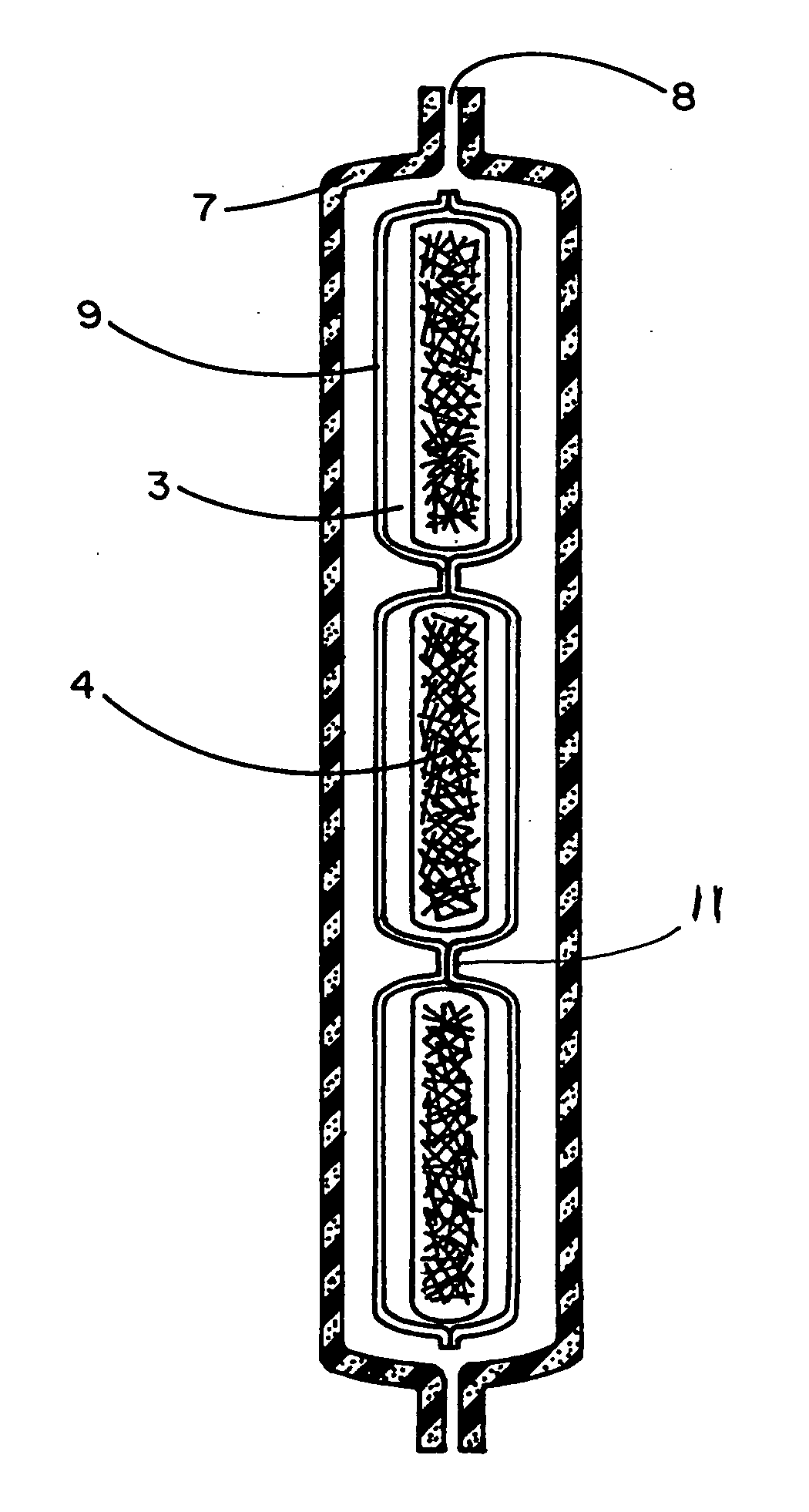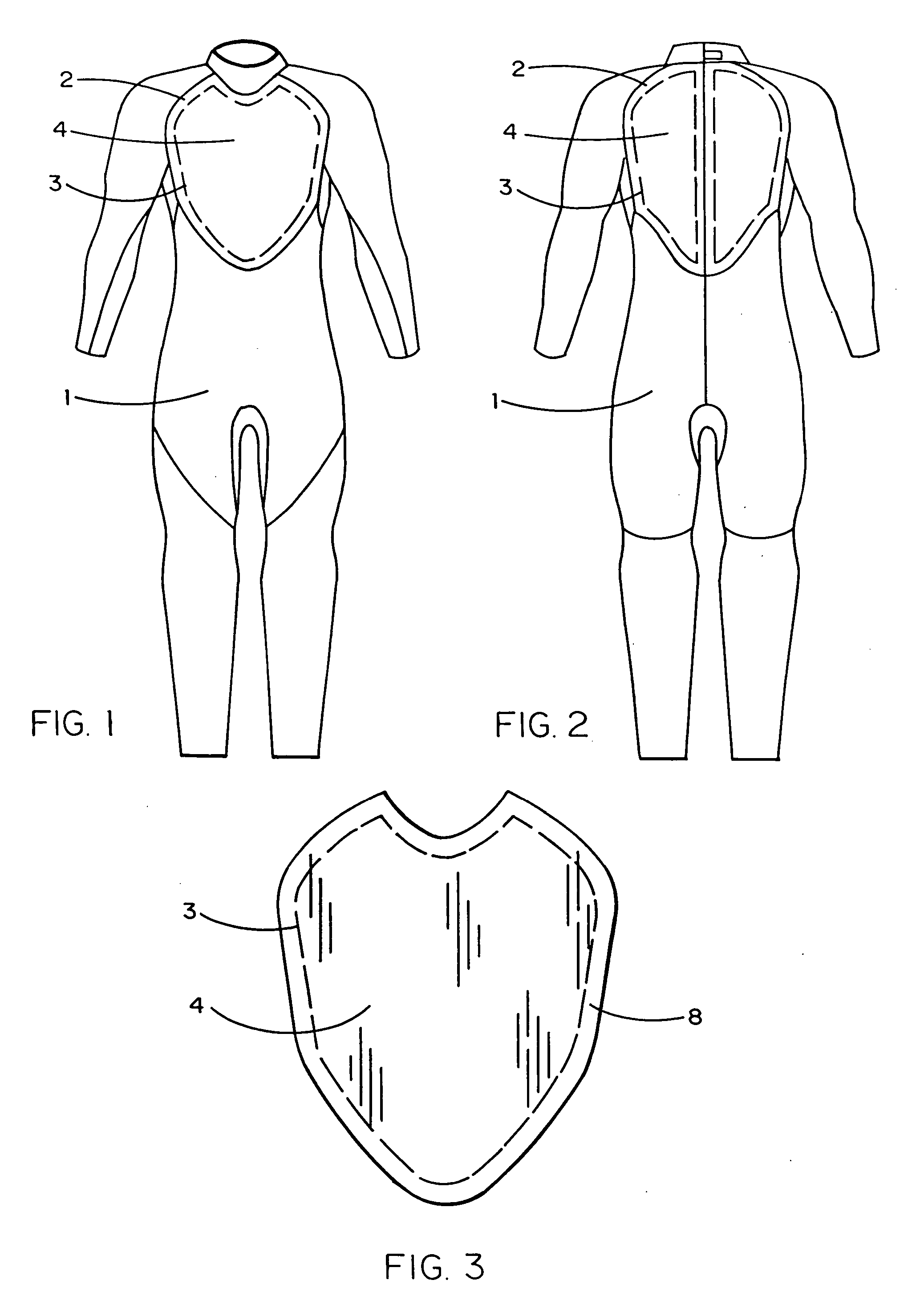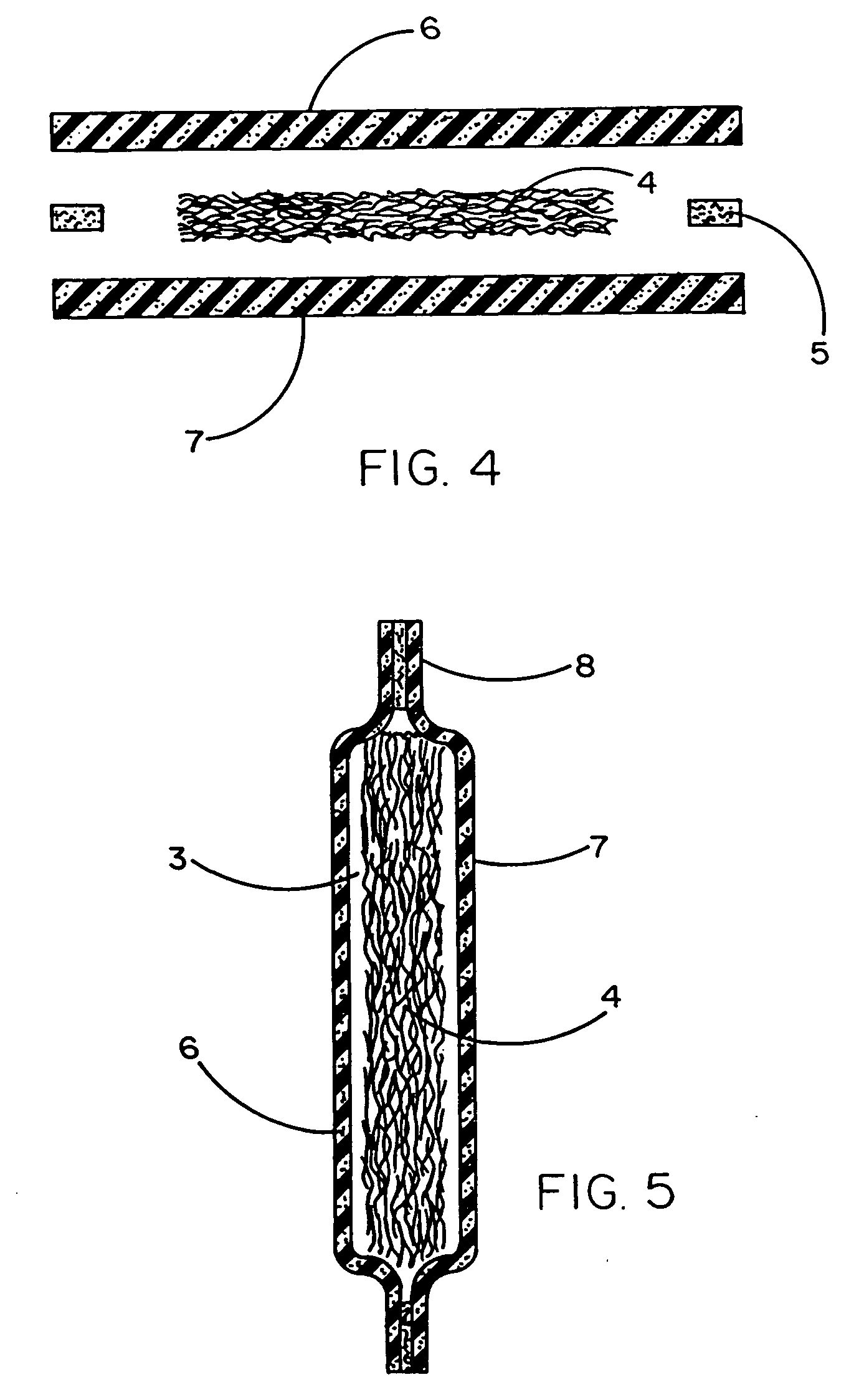Heat retaining wetsuit
- Summary
- Abstract
- Description
- Claims
- Application Information
AI Technical Summary
Benefits of technology
Problems solved by technology
Method used
Image
Examples
Embodiment Construction
[0021] Referring to the accompanying drawings, it will be seen in FIGS. 1 through 5 that in a preferred embodiment of the present invention, a wetsuit comprises two layers of a sponge-like material, namely, layer 6 and layer 7. These sponge layers may or may not have a fabric-covered surface. In the wetsuit 1 shown in FIG. 1, most of the regions of the two layers of sponge material are glued together using glue 5 to form a laminated wetsuit configuration. However, in one or more selected regions 2 (i.e., chest, left back, right back, etc.) the two layers of sponge material are left unglued and thus free to separate from one another to form an air chamber 3 surrounded by a glued border 8.
[0022] In the preferred embodiment shown herein, these air chambers are filled with a low density stuffing material 4. This material will preferably have a density of 0.02˜0.05 mg / cm3 such as can be achieved using a multi-layered fiber structure (i.e., layered cotton fiber, synthetic fiber or the li...
PUM
 Login to View More
Login to View More Abstract
Description
Claims
Application Information
 Login to View More
Login to View More - R&D Engineer
- R&D Manager
- IP Professional
- Industry Leading Data Capabilities
- Powerful AI technology
- Patent DNA Extraction
Browse by: Latest US Patents, China's latest patents, Technical Efficacy Thesaurus, Application Domain, Technology Topic, Popular Technical Reports.
© 2024 PatSnap. All rights reserved.Legal|Privacy policy|Modern Slavery Act Transparency Statement|Sitemap|About US| Contact US: help@patsnap.com










